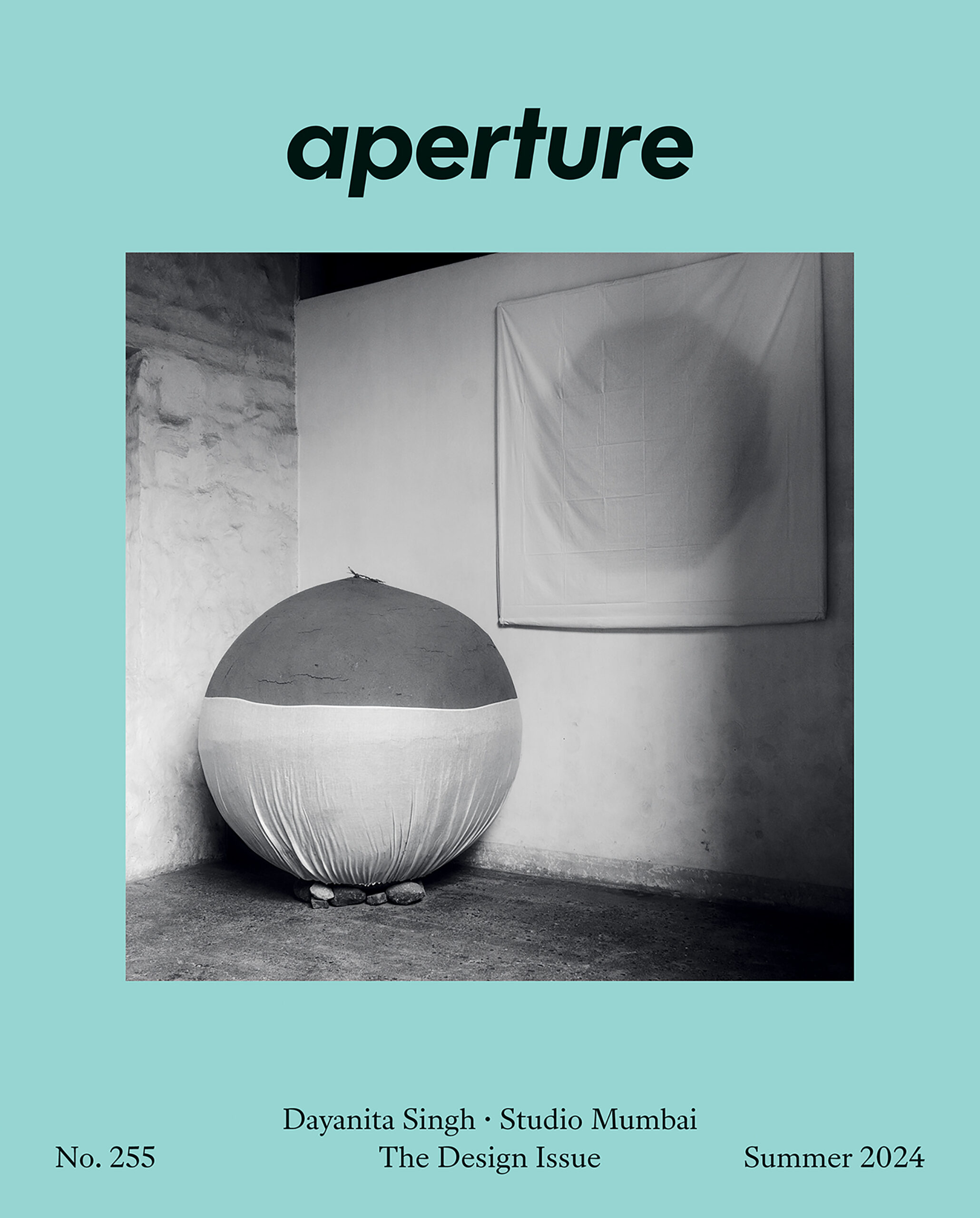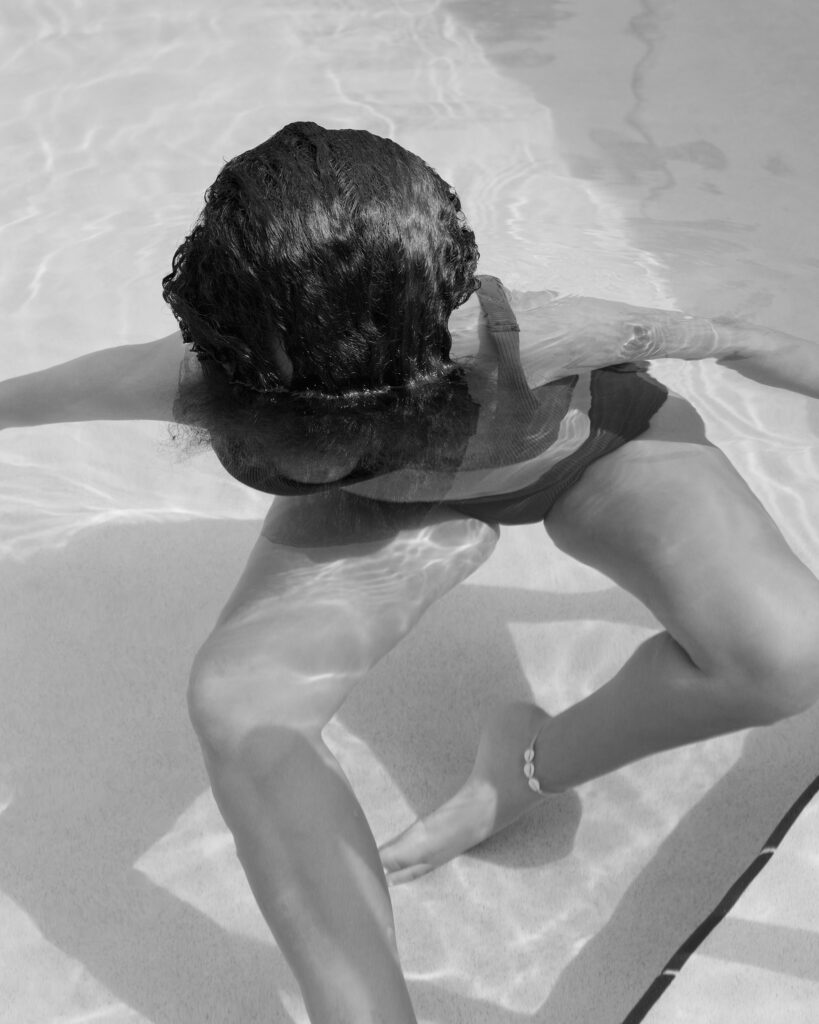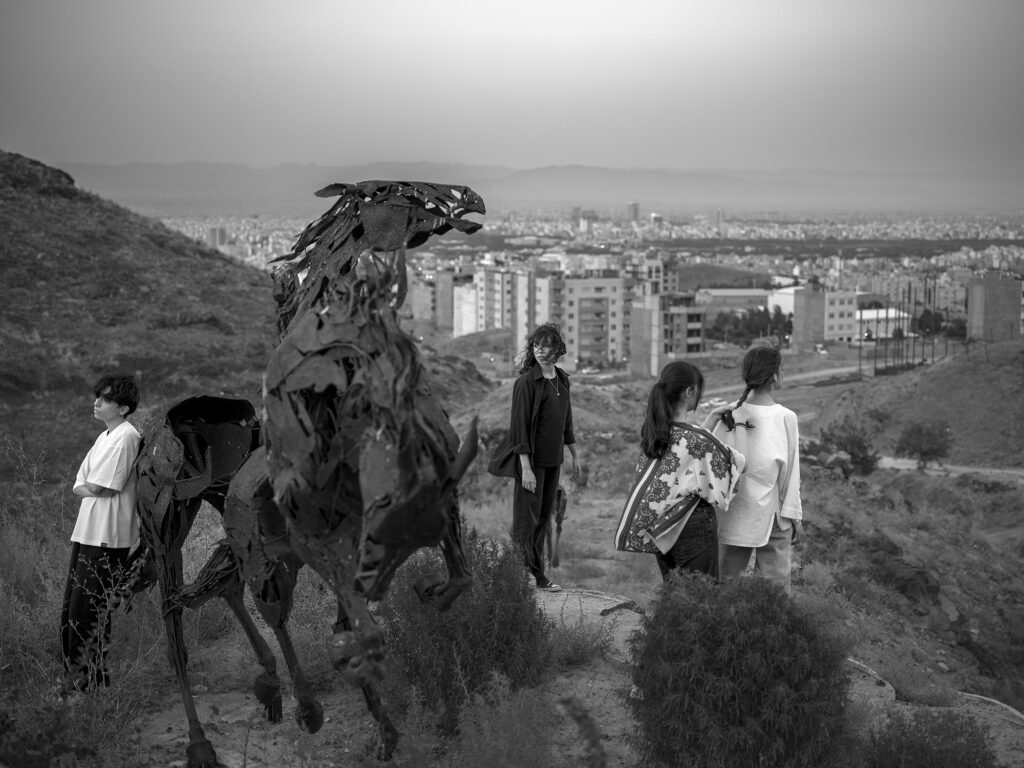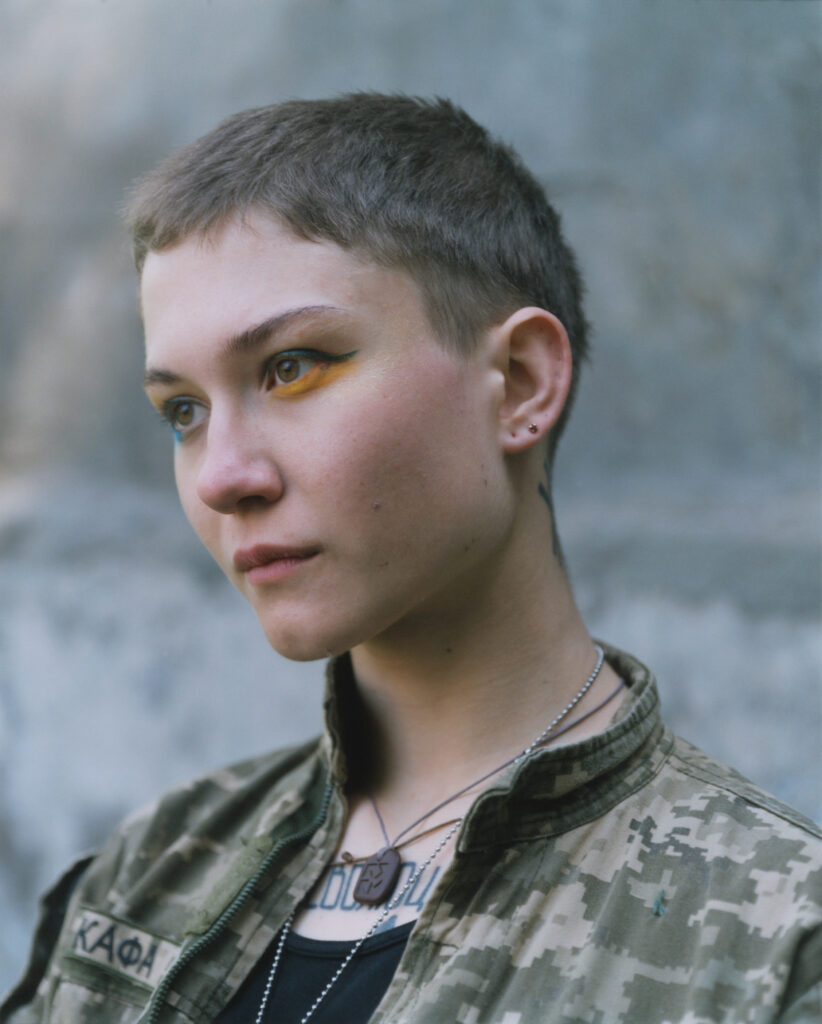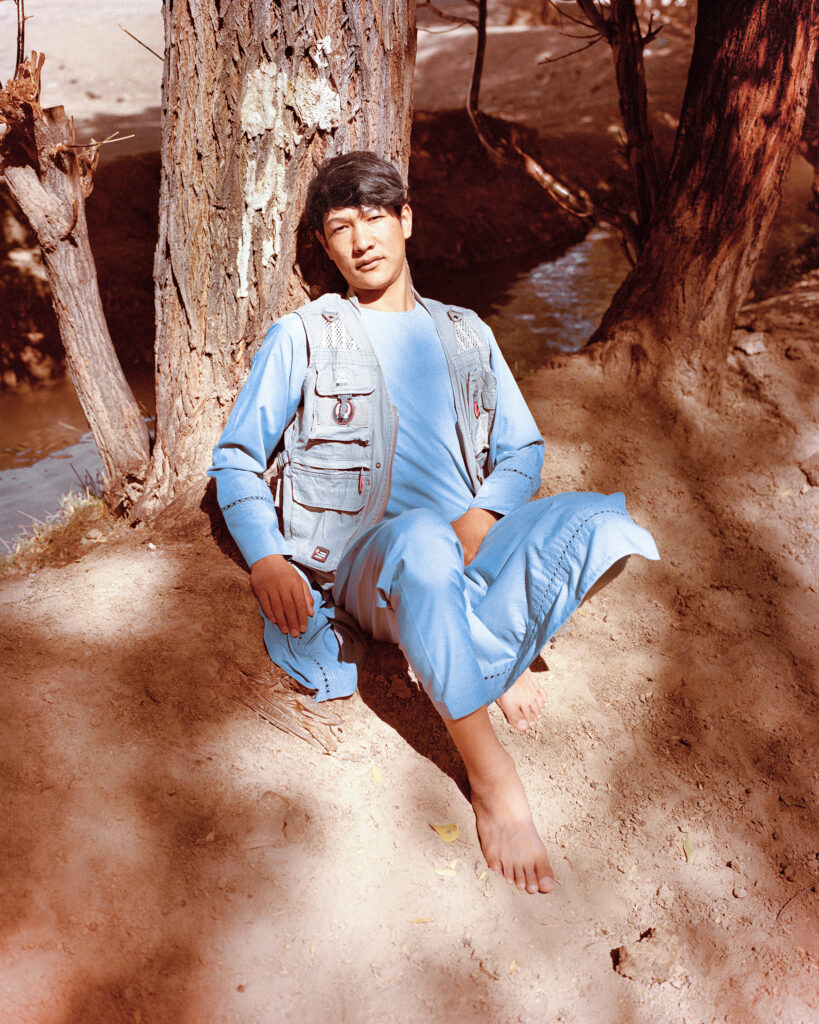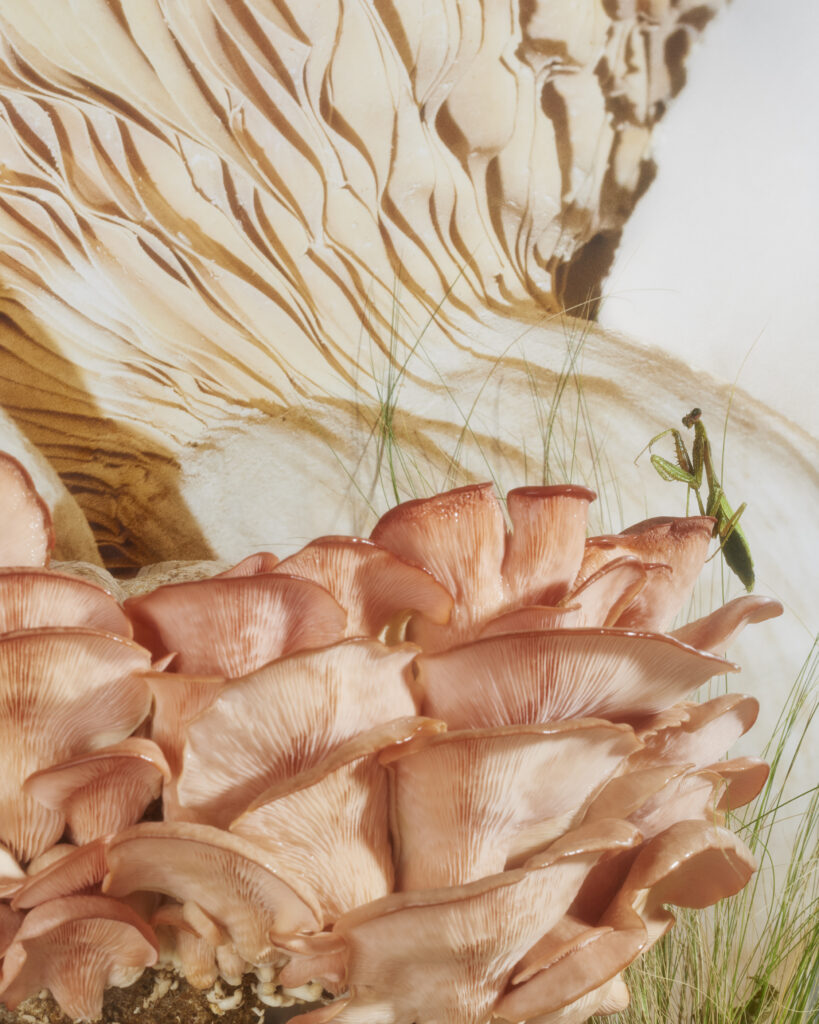Portfolio Prize
Avion Pearce Creates a World between Reality and Dreams
Winner of the 2024 Aperture Portfolio Prize, Pearce maps the interplay between time and the body.
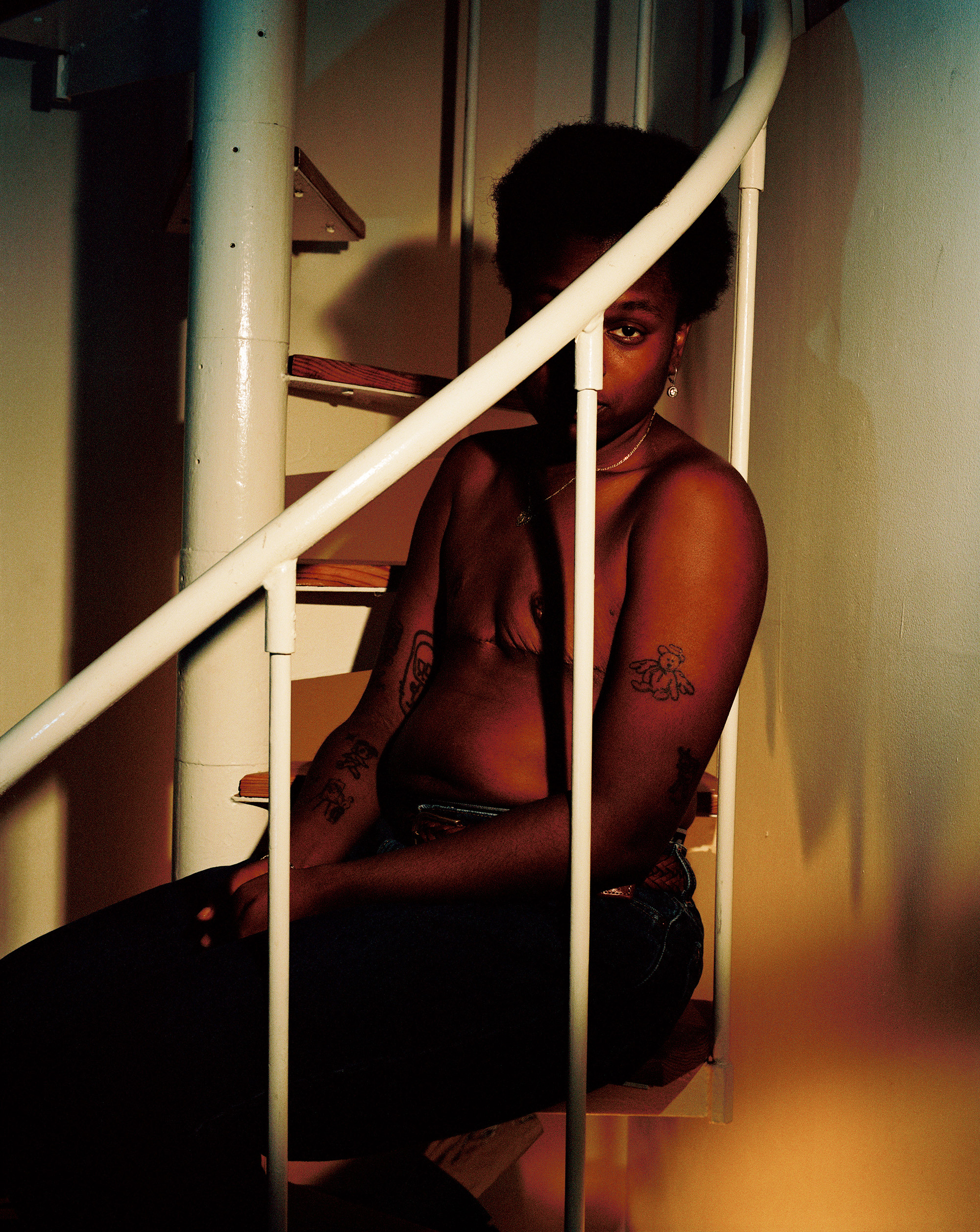
In her poem “A Litany for Survival,” Audre Lorde speaks of the precarious experience of living with the knowledge that one’s survival is not only without guarantee but actively, purposefully threatened. Avion Pearce borrowed a line from Lorde for the title of their series In the Hours Between Dawn (2022–24), an ode to the possibilities of the midnight hours. The experience of the queer and trans community of color in Brooklyn that Pearce photographs is a testament to Lorde’s words. Survival—half shrouded, yet insistent—can appear in forms both soft and strong.
Pearce, who works with 8-by-10 and medium-format cameras, considers how photography shapes ideas about identity and history. “I was looking at some of the tools that have been used to construct these ideas,” Pearce told me recently, describing their desire to use older photographic methods to address the way the form has influenced how we see and understand the world. The presence of other photographic documents—a film still, a poster, a backdrop showing men in suits outside a Harlem jazz club—within Pearce’s pictures is also notable, and seems to speak to the power, promise, and perils of imagery.


Merging analog techniques with political purpose and a poetic sensibility, Pearce creates a visual realm that operates somewhere between reality and dreams. How to express what goes purposefully unseen? The assault on trans and queer rights, recently emboldened in this country, requires new ways of thinking about visibility, Pearce said, describing a certain aesthetic associated with queer photography: subjects pictured in a straightforward and highly perceivable way. “That work is really important and necessary, but I also feel that, in this particular moment, it’s important to think about whether or not visibility is necessary, and when it’s harmful.” For some images, Pearce photographed at night, while in others, they used a day-for-night technique that approximates night, allowing for a selective exposure within the frame while leaving the rest in darkness.
The assault on trans and queer rights, recently emboldened in this country, requires new ways of thinking about visibility.
Born in Flatbush, Brooklyn, to Guyanese parents, Pearce now lives in New Haven, Connecticut. Growing up, their parents took many family snapshots of Pearce and their brother, and the photographer remembers bringing their father’s 35mm camera to middle school to make pictures of friends. World-building and an attraction to magical realism is an inheritance from their mother, who shared an interest in beauty, detail, and the cultivation of a space.
Pearce attended Parsons School of Design for photography, and commercial photography, then advertising, before pursuing an MFA at Yale. It was there that Pearce was inspired by Abelardo Morell’s use of the camera obscura, which is deployed in one of Pearce’s particularly striking images: a figure lies in a dark bed, the Brooklyn skyline floating upside down on the wall above their head like a dream made visible. The camera obscura technique, employed for centuries by painters, recalls Pearce’s impressionistic use of light and shadow, focus and atmosphere throughout their imagery. Other influences include Ming Smith, Roy DeCarava, and Graciela Iturbide—photographers who innovated with light, motion, and ambiance—and the films of Wong Kar-wai and Rainer Werner Fassbinder.
Pearce’s series also tells a story of housing insecurity and displacement, with Brooklyn, and especially Crown Heights, a character in its own right. Exploring photography’s potential to chart the interplay between time, the body, and the borough’s transformation, Pearce’s expression relies as much on feeling as on fact. In the Hours Between Dawn inhabits multiple registers, a document of what is and a vision of what could be. As in Lorde’s “A Litany for Survival,” Pearce’s sight stretches, “looking inward and outward / at once before and after / seeking a now that can breed / futures.”

Beyond Lorde, there is a distinct literary quality to Pearce’s photographs. “Toni Morrison has this really beautiful way of describing light, of describing atmosphere, of describing the mundane,” said Pearce, who in a recent rereading of Beloved was particularly taken by Morrison’s depiction of the pulsing red light that fills the house at 124 Bluestone Road, where the ghost of Beloved returns to her mother.
“I just really wanted to know how that could translate to the process of making an image,” Pearce explained, considering how transcendent color might communicate feeling, sensation, even memory. “Is it possible,” they added, “to transport someone to a space or a time using something like light and color?” The luminous imprint of In the Hours Between Dawn lingers long after one’s eyes have left the artist’s world.


Courtesy the artist
Avion Pearce is the winner of the 2024 Aperture Portfolio Prize. A solo exhibition of their work will be on view at Baxter St at the Camera Club of New York from June 26–July 26, 2024.
This piece appears in Aperture No. 255, “The Design Issue.”


